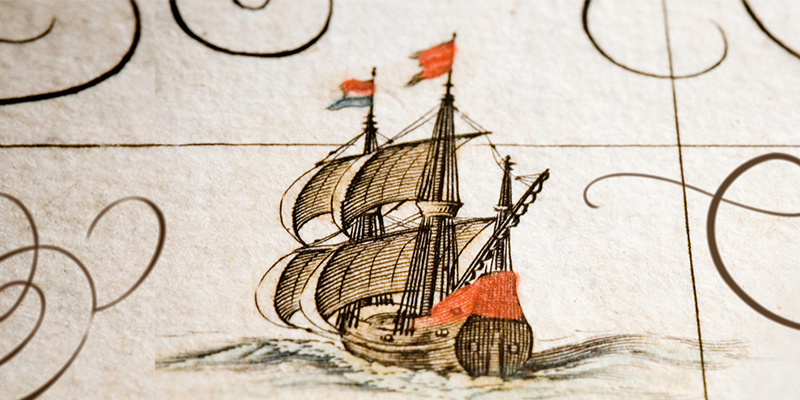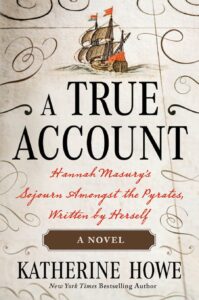Not too long ago I found myself nearly alone in the Maritime wing of the Peabody Essex Museum in Salem. The Peabody Essex was formed from the gradual merging of the Essex Institute, once the historical society for Essex County in Massachusetts, and the Peabody Museum, a descendant of the once-storied, now mysterious East India Marine Society. The East India Marine Society was founded in 1799, with a membership, per its charter, “composed of persons who have actually navigated the seas beyond the Cape of Good Hope or Cape Horn, as masters or supercargoes of vessels belonging to Salem.” Not too many of those around now—to my knowledge I have met only one person who fits that description, a man who has single-handed around the globe alone. And I think technically his vessel belonged to Marblehead.
The East India Marine Society established a museum of art and curios collected by the sea captains on their distant voyages, with special emphasis on the worlds beyond the Capes of Good Hope and Horn. As such, today the PEM has one of the most idiosyncratic permanent collections of any modern art museum. In addition to an internationally renowned collection of Chinese art, it also contains somewhere in its vast labyrinths a preserved termite nest from Suriname, a pickled human head from New Zealand that was once displayed behind a curtain, and a cream satin wedding gown from 1856, stored with a desiccated piece of wedding cake that still smells faintly of chocolate. Supposedly, in the nineteenth century, the tour guides were all old sailors, shuffling visitors through an Enlightenment vision of the world beyond Salem Harbor.
As I roamed alone through the Maritime collection, I came upon a vitrine full of scrimshaw. (You probably won’t be surprised to learn that a historical novelist who is also a sailor loves scrimshaw). And it’s not unusual for scrimshaw, in between its square-rigged ships and waving garlands and hearty toasts, to include drawings of women. But this one was different: it read “Fanny Campell, Female Pirate Captain.”
As I roamed alone through the Maritime collection, I came upon a vitrine full of scrimshaw.I’d never heard of this female pirate captain. How had I missed her? She wasn’t in A General History of the Pyrates, by Captain Charles Johnson, my favorite primary source about the Golden Age of Piracy. Who was she?
As it happens, the reason I had never heard of Fanny Campbell is because Fanny Campbell, despite what the scrimshaw and its exhibition label would have us believe, never existed. She was the protagonist of a novel first published in 1844, called Fanny Campbell, the Female Pirate Captain: A Tale of the Revolution, and written by Maturin Murray Ballou, the first editor of the Boston Daily Globe. Fanny Campbell tells the story of a young woman from Lynn, Massachusetts who disguises herself as a boy to rescue her fiancé from pirates on the eve of the American Revolution, rescues him, and then takes on a privateering commission against the British. The novel was such a blockbuster that Fanny’s story was sometimes mistaken for truth, and the image of her on the frontispiece of the novel was reproduced often, particularly in scrimshaw.
Fanny Campbell is also, unfortunately, written in a sweeping, sentimental style that most modern lovers of pirate fiction would find a bit wooden and hard to take.
A story that holds up better than you might expect is the ur-text of pirate fiction: Treasure Island, by Robert Louis Stevenson. Originally published as The Sea Cook: A Story for Boys in 1883, Treasure Island is, like Fanny Campbell before it, a nineteenth century take on what purports to be an eighteenth-century story. Young Jim Hawkins is working at the Admiral Benbow Inn on the coast of England with his ailing father and his mother when a mysterious visitor known only as “the Captain” moves in, offering Jim a silver coin every month if he would only keep an eye out for a seafaring man with one leg. When a band of pirates delivers the dreaded black spot to the Captain (whose tattoo tells us his name: “Billy Bones, his fancy”), Jim steals a treasure map from the dead man’s sea chest and winds up as cabin boy on the Hispaniola, on a voyage to hunt for the treasure belonging to a long-dead pirate named Captain Flint. From Treasure Island we get Long John Silver— the sea cook with only one leg—and such pirate tropes as a parrot, a map that says “bulk of treasure here,” and the ubiquitous sea chanty “Fifteen Men on a Dead Man’s Chest.” In between there are mutinies, firefights, ship beachings, and a castaway named Ben Gunn who spends his days dreaming of cheese. And, of course, Flint’s treasure. Don’t be fooled by the exhausting numbers of remakes of this story—it’s worth it to read the original.
Almost one hundred years later, in 1979, Peter Benchley turned his attention to pirates in a novel that I’ve thought about more than I would care to admit in the thirty-odd years since I read it. Benchley was part of a storied literary family, being the grandson of Robert Benchley, one of the original members of the Algonquin Round Table. You probably know his name, though, because he was the author of Jaws (1975). Four years later he published The Island, about a divorced journalist who takes his young son along with him to the Turks and Caicos on an assignment about the Bermuda Triangle (side note—why did we stop writing about the Bermuda Triangle??). They are captured by a group of pirates who have been living in an isolated community on one of the islands there since 1671. The pirates are only able to maintain their numbers by raising children that they capture, and soon the journalist must battle the pirates for the soul of his son. I’m sure this book probably hasn’t aged that well—among other things, I have a lot to say about why there aren’t any female pirates in the community— but the description of how it feels to eat a raw bird skull has haunted my dreams ever since.
Thirty years after Benchley’s take, an assistant going through novelist Michael Crichton’s computer after his death found the contemporary thriller version of buried treasure: an unpublished manuscript that was released in 2009 as the novel Pirate Latitudes. Crichton had supposedly been either working on, or thinking about, a pirate novel since the 1970s, though his publisher has claimed that the book was written during the first decade of the 21st Century. Pirate Latitudes is a historical adventure that is loosely based on real events, opening in the notorious pirate nest Port Royal, Jamaica in 1665, at the height of the first generation of the Golden Age of Piracy. The novel has some real historical bona fides, including a multiethnic crew (a Jewish pirate, and a Moor, among others), and even a woman disguised as a man, though that character, Lazue, rather hilariously likes to confuse her enemies in battle by baring her breasts. (I should try that in a yacht race, do you think it’ll work?).
But of all these, I have to say that even the best pirate fiction doesn’t hold a candle to Charles Johnson. A General History of the Pyrates was first published in 1724 before going through at least eight editions, and it’s probably a bit much for a casual pirate enthusiast, clocking in at over 800 pages, and written in an 18th century voice. But they’re all here: Blackbeard. Stede “Gentleman” Bonnet. Bartholomew “Black Bart” Roberts. Ned Low. Ann Bonny and Mary Reade. They sack and pillage and raid and are captured and hanged and gibbeted, and maybe some of it’s fictional… but some of it isn’t. Unlike Fanny Campbell, here there is no moral redemption, no tidy conclusions like we see in the 19th, 20th, and 21st Century examples above. Here is a merry life and a short one, and make no mistake.
***


















